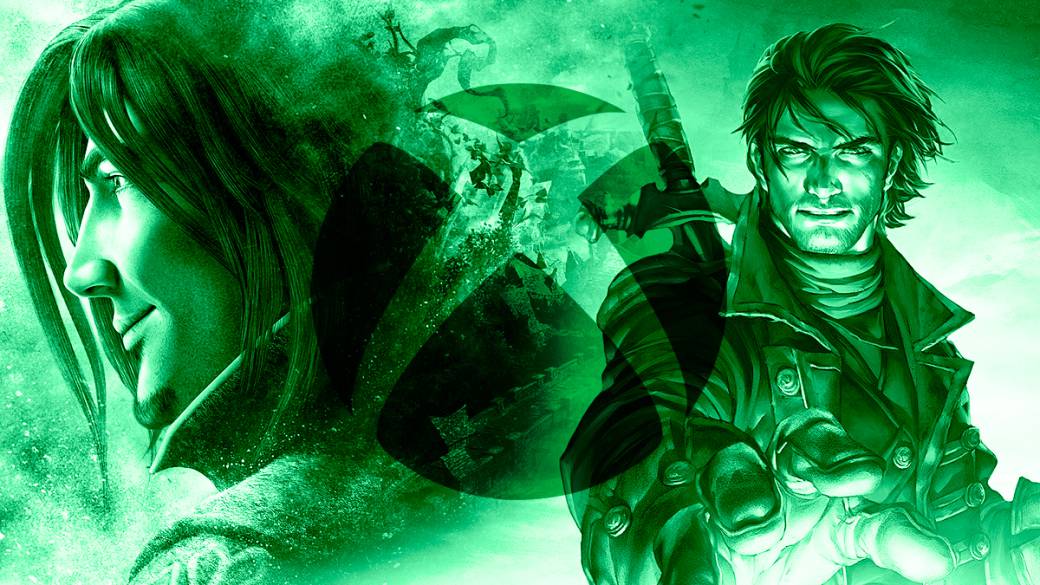
We delve into the origins of one of the most iconic games on Xbox, Peter Molyneux’s dream of delving into the RPG genre
Fable is one of those unique games that appear from time to time. It is difficult to find similarities with other titles, since it takes a little here and there and disperses it at will. It integrates a small dose of games of being god of Molyneux; also some Zelda in her combat mechanics and exploration of the environment. However, it was for its genuine elements that it made a name for itself in the RPG hall of fame.
Albion, land of lush green fairytale landscapes. A classic fantasy with chattering doors that recite puzzles and cartoonish beings that invite us to go on amazing adventures. Equestrian paths that lead to charming towns like Bowerstone, whose people scamper proclaiming our latest exploits. Cheers or offenses, sometimes also fear for our actions. On top of these quirks, the unmistakable component of Fable was the sly humor of British origin that covered his entire world. “Chase chickens, do you chase chickens?”
What is the legend behind the Oakvale hero? And the influence of the Black & White designer in the adventure? On this trip to the past we will discover the commitment of two brothers to fulfill their dream.
After the departure of Bullfrog
In 1997 Peter Molyneux was leaving Bullfrog to take command of his new video game company, Lionhead Studios. A year later, Dene Carter and Simon Carter, along with Ian Lovett, followed the designer’s steps to lay the foundation for their new studio, Big Blue Box. Creative independence would give them freedom to shape an idea that had been spinning in their head for a decade.
His future creation contained picturesque landscapes, towns full of life and npcs that would react to the actions of the protagonist. They wanted the player to enjoy an experience away from the hackneyed role-playing setting. This is how Dene Carter commented:
“Our initial goal was to create a massive and very relevant role-playing game where people who don’t usually play RPGs saw that this way of playing is fun. Why it might appeal to them even though, perhaps, they never had a D&D in their lives. ” But there was a small problem: they had no experience creating RPGs.

The Carter brothers had a good friendship with Molyneux. In one of their usual encounters with the popular British designer they shared the uncertainty of those days. Molyneux immediately understood the couple’s dilemmas. In fact, he had recently founded his own studio and was going through many of those setbacks. In the small meeting they shared their main obstacles: finding a publisher that accepts risks to innovate and apply the appropriate technology. However, small studios ran into added barriers, and the most cumbersome was carrying the tasks of different departments that constantly slowed down creative work.
In order to help new startups, Lionhead devised a network of satellite studies through which they would relieve teams of administrative burdens. In addition, they would make available the necessary resources for the development of their projects. Big Blue Box was one of the first studios to count on Lionhead.
Although many ties were undone, the project’s survival depended on finding a publisher with hard cash. And as you well know, these types of companies are not easy to cajole. But they firmly believed in his idea. And they had the support of the media Peter Molyneux and Lionhead. A piece of cake, they thought.
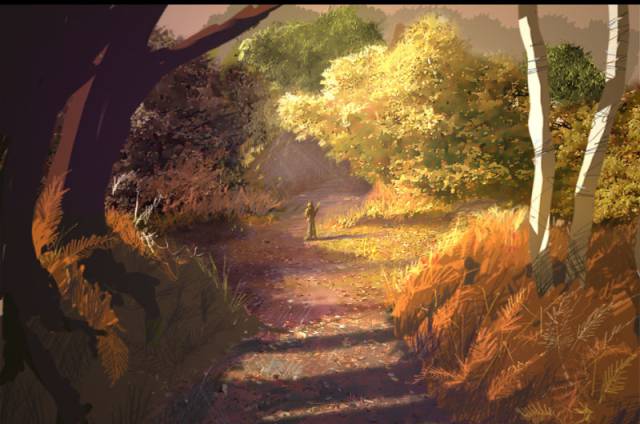
In that first stage, the team worked and resided in one of the back rooms of Peter Molyneux’s mansion. There they spent weeks building the game design while receiving unsuccessful calls from publishers. Many of those interested companies did not fully understand the concept and, after several calls, disappeared without a trace. The situation for the group became more complicated as funds ran out. Still they decided to give a boost to development and spend their last savings on the signing of two new programmers: Max Disson, a young graduate; and Martin Bell, a former Dungeon Keeper partner. Talent to spare, they just needed an opportunity.
Microsoft knocks on the door
Economic hardships drowned the aspirations of the small group, which did not know how long it could last without an injection of cash. After several months of concern, the miracle suddenly occurred: the Carter brothers received a call from Microsoft. The American giant perfectly understood the studio’s vision and was excited to translate it into a game. His financial problems were over. They were now in a position to leave the comfortable residence of the Lionhead founder and take possession of a large office.
Fable development began in 1999. In the first instance, the Big Blue Box RPG was planned for Dreamcast, but as Tim Timmins revealed in an interview about Fable Anniversary, the failure of the Sega console resulted in a change of course towards Xbox.
Under the warm Microsoft coat, Big Blue Box was nurturing new talent and grew to 20 members. At this time, Dene and Simon refined their design concept and set the keys to what would be Fable in the future:
“… we will create a unique world full of people who will have real and compelling lives and personalities. The player’s actions will have a substantial impact on history, the world, and others. The result of your choices will be genuinely emotional. And the world where everything will happen will be precious. “
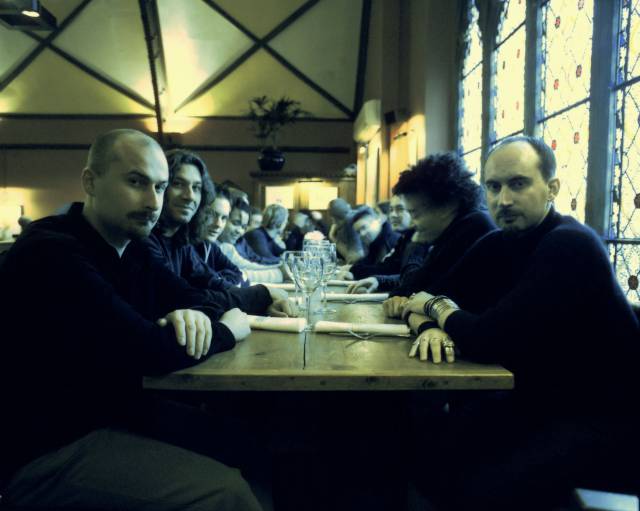
His fresh and daring vision spread with optimism among all the young members who began their journey in the studio. But would they be able to carry out a project of such magnitude?
Wishworld, the seed that Fable spawned
Before Project Ego and Fable, the Carters had a rather different RPG in mind, their name was Wishworld. Back then, Wishworld had been named in some development journals and seemed to simply elude a project name. The revelation came a long time later, specifically in 2019, when the Twitter account of the indie game Kynseed (developed by former Fable members) showed images of a mysterious playable version dated December 2000.
Thanks to the investigation by journalist Chris Bratt, the Wishworld design document came to light. Among its pages a place called “The Academy” was related, a meeting point for students who cultivate in the magical arts. Through powerful spells, the player would have the ability to radically transform landscapes. Mountains that give way to volcanoes, or vegetation that arises in arid areas. Players could claim regions and change them to their liking in a persistent world. “Imagine playing a 3D Zelda where the world is constantly changing for you, and where your actions alter it for other players at the same time.”
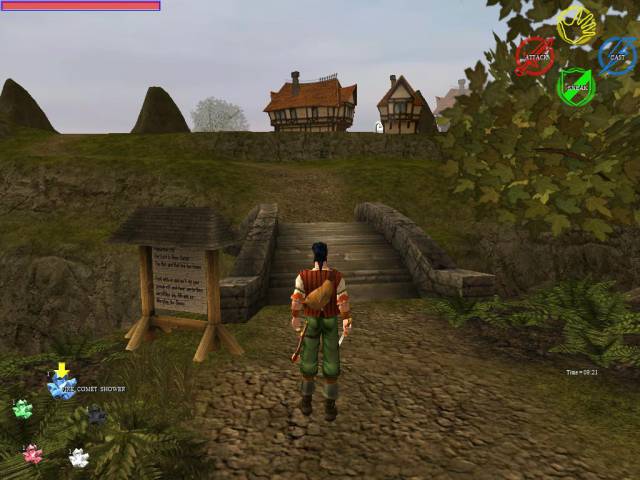
The Wishworld title was practically preserved until the alliance with Microsoft, but the concept changed before. The Carters and Peter Molyneux noted that this was a risky project and difficult to assimilate from an editor’s point of view. Because of this, they remade the design into something simpler and more salable. From that moment it was decided that the main character would take the helm of the story. Molyneux’s idea of creating a moral system with an impact on the player’s reputation was also included.
Shaping Albion
One of the indispensable points to cross off the to-do list was that Albion must be beautiful. Radiant and magical in nature, as shown by the folk tales of the Grimm brothers (Little Red Riding Hood, Hansel and Gretel …) to which the Carters constantly referred.
“… we knew that dense, lush plant life was necessary to achieve ‘the look.’ But putting each plant by hand would take years, so we needed something else. […] Martin and our artists proposed a method to make the engine automatically look at the soil in various sections of the landscape and ‘grow’ the relevant plant life for each type of terrain. ”
After two months of hard work and industrial quantities of Red Bull, they finally hit the key. Martin Bell proudly introduced the team to a complex organic landscaping system. They all crowded in front of their monitor and watched in fascination as nature sprouted in every corner of Albion with authenticity. A feeling similar to turning the pages of an illustrated story of yesteryear.

One of the biggest pitfalls in the process was choosing the combat system for the RPG. They spent days playing everything that fell into their hands and analyzing different approaches until they opted for a direct and aggressive real-time combat. To give it more strength, Molyneux suggested integrating three different combat modes: close combat with weapons, based on magic and at a distance with bows and crossbows. Also, the predominant type of combat would transform the appearance of the hero. For example, abusing the sword caused the character’s body to tone up. Instead, increased use of magic tinted the skin with arcane symbols. On the other hand, a simple stealth system was implemented for infiltration into enemy bases or things as mundane as the theft of foreign objects.
However, the team’s real challenge was focused on designing a social AI to manage NPCs’ behavior and routines. In relation to this, they had set out to carry out an aging system where the seasons and the age of the protagonist would change depending on the playing time. In this way, the story would follow the life of a hero who would grow from tender childhood to adulthood. The years would reflect the marks of battle. And the NPCs would remember our exploits or mischief over time. As a colophon, we could get married and have children. Not happy with all this, they would add a cooperative multiplayer for 4 players.
Big Blue Box was up to an ambitious project that would offer freedom never seen before. Unfortunately, the illusion of accomplishing his great goals would vanish in the last stage of development.
From Project Ego to Fable
Microsoft entered E3 2001 by stepping on the gas with its future Xbox console. Bill Gates’ company was willing to take a slice of the video game market, and to fulfill that claim, it unveiled the games that would accompany its machine. The big favorite was Halo, Bungie’s science fiction FPS that sought to revolutionize the genre. A handful of titles in development were also announced, including Project Ego. The first images impressed the media, which praised the graphics of the RPG and collected among its pages the novel details about the open world and the total freedom of the player, its most promising feature. From that moment, the magazines did not lose sight of the development and regularly published all kinds of information and images that Lionhead was producing. The game would go on sale in fall 2002.
A year later, at E3 2002, Project Ego released its first trailer. It emphasized again the beauty of the environment and the infinite possibilities for the player. More and more curious people were concentrating around the Xbox title. At that time certain names were already being considered; Alter Ego was one of them, but he was already licensed. At the Microsoft X02 event in September it was announced that the final name would be Fable.
A hellish crunch
Fable was scheduled for release in late 2002, but suffered different delays due to the long list of tasks ahead. The last year of development they understood that if they wanted the game to be released once and for all they would have to do without some promised features; and, others, to reduce them excessively. But, in addition, they urgently needed labor. In its final stretch, the Fable team went from 20 members to 70, ending with more than 150 with the reinforcement of Microsoft.
During those long four years great internal changes took place. Big Blue Box was taken over by Lionhead, and Microsoft later acquired Lionhead Studios. However, it was in 2003 when Big Blue Box changed forever. In the first years, the study had been characterized by a family atmosphere and a calm work rhythm, but with the passage of time it was evident that Fable’s development was in a dry dock. Simply, the different parts of the game did not come together.

Iain Denniston, a programmer who started in the studio in 2001, recounted the state of the game two years after its entry:
“It was clear that we were in trouble. We had a lot of great things to show: the demos for the press and the ones we gave at E3 were always well received, but the open secret was that we had practically no games. There was a lot to do, so much so that I think it wasn’t even decided. It was like we didn’t really have a plan for how to get to the end. There were a lot of ideas and a lot of potential, but nothing concrete. If we wanted to launch the game at some point, something had to be done. And something made”.
From that moment, real and immovable deadlines were established. But fulfilling them went through extreme sacrifices like working weeks without rest or giving up annual vacations. The ‘crunch’, that impulse that usually occurs in the last months of development, lasted for a year and deeply undermined the morale of the team. Denniston indicated how extreme exhaustion triggered a severe depression that led him to apply for leave: “the consequences for me were devastating. I was briefly prescribed antipsychotics at my lowest point. I experienced migraines, terrifying tunnel vision, fainting, severe depression, anxiety, panic attacks, paranoia, hallucinations, and thought insertion. I ended up having to take time off from my illness in the middle of everything. ”
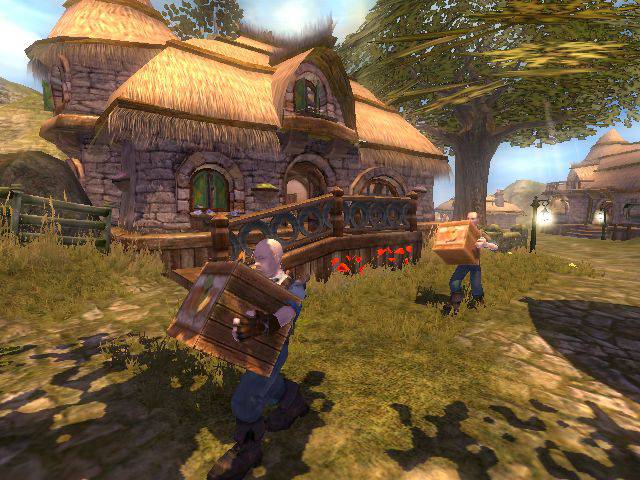
He was not the only team to suffer marathon days. Dene Carter himself confessed in a GDC that working at Fable was a horrible experience until practically the last few months, at which point the pieces finally fit together. This opinion was also shared by Peter Molyneux, who regretfully expressed the harsh working conditions behind Fable:
“If I’m honest, at Fable we just burned people’s lives; we destroyed the team. Week after week, month after month, they worked 50, 60, 70, 80 hours a week. It destroyed their lives and their marriages.”
Fable was finally released on September 14, 2004, but it wasn’t exactly the title they said it would be.
Unkept promises
Peter Molyneux, who served as project supervisor, was heating the environment with unfeasible ideas. He exposed the complex aging system, excessive freedom and even a 4-player multiplayer without waiting to the press. Although the comment that went around all the publications in the medium was that of “we are going to make the best RPG ever.” Expectations were through the roof and the result was not a tasteful dish for the community.

The first analyzes gave Fable notable highs and good overall scores, but among its negative points they highlighted the elimination or reduction of many promised elements. The fantastic open world shifted to more linear sections with heavy loading times. Certain locations visible in promotional images were completely removed. But what sat like a jug of cold water was that the freedom of which the title boasted and its impact on the world was not so significant. No trace of that amazing aging system, nor of the multiplayer, and there was no possibility of descent. The list of unfulfilled promises stretched out over several paragraphs.
After Reviews, the veteran designer expressed his unease at not being transparent:
“I used to sit down with the journalists and talk about my ideas, I said that I planned to make the trees grow and that everyone could do what they wanted, but I always forget to say: but if it doesn’t work, I won’t put it in the game […]. I’ve been thinking that I shouldn’t talk so much about ideas that I have as concepts and start getting more precise and talk about what is sure to appear in the game. “
Success, despite everything
The cut in the mapping did not deprive its corners of magic; Albion felt like a vibrant world. Everyday events happened around us in which we had the option to get involved. Busy merchant routes sometimes became dangerous with the arrival of fearsome bandits who assaulted these poor individuals. The player could decide if he wanted to intervene to save their necks or pass by. Getting into the middle was not a commission, it just represented an act of kindness with which we would obtain gratitude and fame.
The main story of Fable launched us on an exciting personal quest to discover a powerful enemy, the imposing Jack of Blades. But the fun did not end there. The world was full of fun side missions. Some passed through guarding travelers who kept chattering along the way and even interacted with the surroundings. In others we were victims of playful villagers who teased us – and never better said – promising their daughter’s hand if we put on a horrifying hairstyle, beard and mustache. The laughter of the people of Albion foreshadowed that this was not a good idea. Definitely, the organic experience offered by the degree overcame the shortcomings.
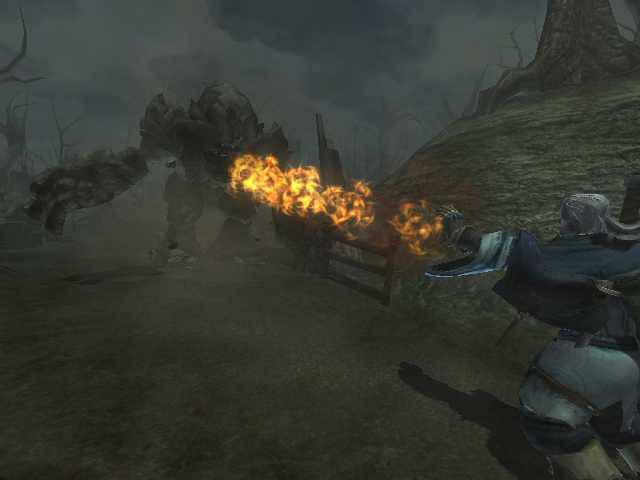
The limitation of freedom in its playable section did not affect the creativity of the players. The use of the hero’s gestures gave a good handful of anecdotes. Molyneux was very enthusiastic about it in a post-launch interview:
“Well, the most incredible thing about Fable is the fact that there are so many examples where people play the game in a certain way and things happen that were never designed to happen. On the first day, one of the players was playing and managed to get married and decided that he would take his wife on an adventure with him. And this adventure involved breaking into people’s houses and taking their things. It is not a mission in the game, it is something you decided to do. She was saying things like “I should be back home now” and she was getting a little nervous. He then got into a fight with some guards and stood behind his wife to cover himself. She was beaten and died. “
Fable was a commercial success. In its first week, it sold 375,000 copies, reaching 600,000 in just one month. It ended its life cycle reaching 3 million copies. A year later, the title landed on PC via Fable: The Lost Chapters, an extension of the original game with new areas, missions, monsters, and arsenal. In addition, it largely solved the technical problems that dragged the previous one.
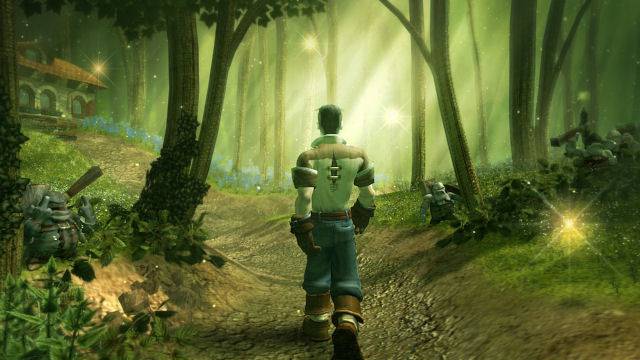
Fable favored the sales of the original Xbox and its good reception ensured its conversion into a series. Fable 2 landed four years later on the brand new Xbox 360 and quickly overtook its predecessor in sales. The saga would continue with other sequels that did not already have such a good reception, which triggered the subsequent departure of Molyneux from Lionhead to regain his roots in 22Cans. The subsequent closure of the study by Microsoft condemned the saga to ostracism.
The passage of time did not erase Fable’s footprint. The community always remembered that thug RPG that was brimming with sympathy and good humor for every inch of their world. An essence that no other game knew how to replicate. However, heroes do not lose hope of returning to that extraordinary world. And we trust that the new voices that resonate on the horizon grant Albion a new era of glory, without excluding those attributes that made it unique.

